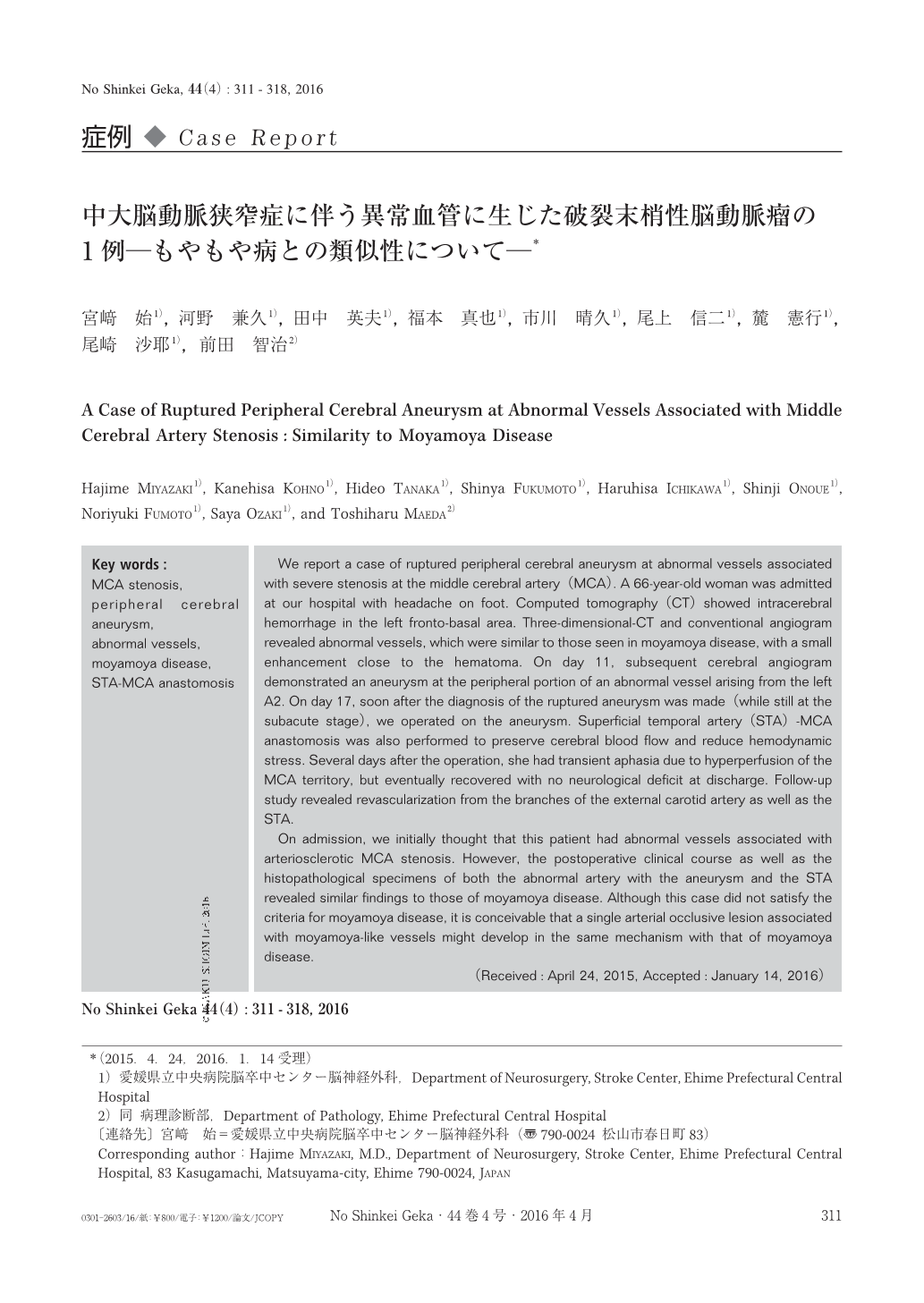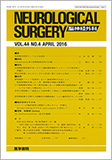Japanese
English
- 有料閲覧
- Abstract 文献概要
- 1ページ目 Look Inside
- 参考文献 Reference
Ⅰ.はじめに
片側の中大脳動脈閉塞性病変の周囲にもやもや様異常血管を認める症例は散見されるが2),その治療については形態学的な類似性からもやもや病の治療に準じて行っているのが現状である.今回われわれは,脳内出血で発症し中大脳動脈狭窄症を伴う異常血管に破裂脳動脈瘤を合併した症例を経験した.亜急性期に左浅側頭動脈(superficial temporal artery:STA)-中大脳動脈(middle cerebral artery:MCA)吻合術および脳動脈瘤処置を行ったので,その病理所見と併せて報告する.
We report a case of ruptured peripheral cerebral aneurysm at abnormal vessels associated with severe stenosis at the middle cerebral artery(MCA). A 66-year-old woman was admitted at our hospital with headache on foot. Computed tomography(CT)showed intracerebral hemorrhage in the left fronto-basal area. Three-dimensional-CT and conventional angiogram revealed abnormal vessels, which were similar to those seen in moyamoya disease, with a small enhancement close to the hematoma. On day 11, subsequent cerebral angiogram demonstrated an aneurysm at the peripheral portion of an abnormal vessel arising from the left A2. On day 17, soon after the diagnosis of the ruptured aneurysm was made(while still at the subacute stage), we operated on the aneurysm. Superficial temporal artery(STA)-MCA anastomosis was also performed to preserve cerebral blood flow and reduce hemodynamic stress. Several days after the operation, she had transient aphasia due to hyperperfusion of the MCA territory, but eventually recovered with no neurological deficit at discharge. Follow-up study revealed revascularization from the branches of the external carotid artery as well as the STA.
On admission, we initially thought that this patient had abnormal vessels associated with arteriosclerotic MCA stenosis. However, the postoperative clinical course as well as the histopathological specimens of both the abnormal artery with the aneurysm and the STA revealed similar findings to those of moyamoya disease. Although this case did not satisfy the criteria for moyamoya disease, it is conceivable that a single arterial occlusive lesion associated with moyamoya-like vessels might develop in the same mechanism with that of moyamoya disease.

Copyright © 2016, Igaku-Shoin Ltd. All rights reserved.


